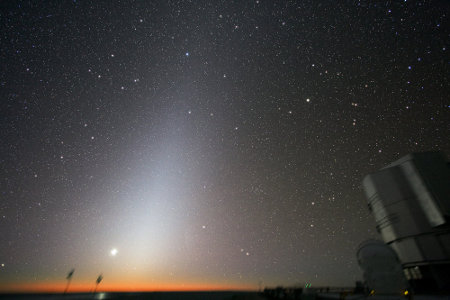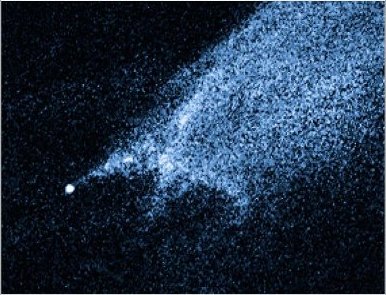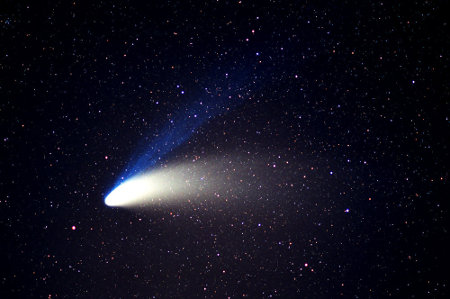|
The dust in our Solar System is a mixture of manifold sources,
three of which are most prominent:
comets, asteroids, and debris from collisions.
It manifests itself by the zodiacal light which is visible
as a faint glow along the ecliptic after dusk or before dawn.
Although visible only in extremely dark areas apart from
moonlight and civil light pollution,
it is responsible for about 60% of the total sky brightness
at night.
If seen from outside, the form of the particle cloud will be
lense-shaped and centered on the sun.
|

|
| Asteroids are believed to be relicts of the planetary formation
that did not succeed to significant growth.
Their current contribution to the interplanetary dust
goes back to physical collisions.
They produce myriads of fragments that disperse elsewhere.
Sometimes they also attach and re-unite to a porouse rubble
pile.
Their surfaces are often covered by a meter-thick layer of
dust, similar to our Moon.
When bombarded by the solar wind or micro-meteorides or
any other particles, the dust grains can be lifted or
ejected (sputtering).
|

|
| Comets are icy bodies containing mineralogical inclusions.
They are liberated from their icy boulder when approaching the sun.
When the surface material sublimates, the particles escape
into space leaving behind a tail of dust and volatiles.
The gaseous component forms the ionic tail of the comet which
gets a bluish hue depending on the gases.
The interplanetary magnetic field takes the charged ions straightly
outwards pointing off the sun.
The dusty component is left behind along the trajectory and makes
up the curved white tail.
These dust particles diffuse slowly into all directions,
but they are subject to other perturbances.
|

|







